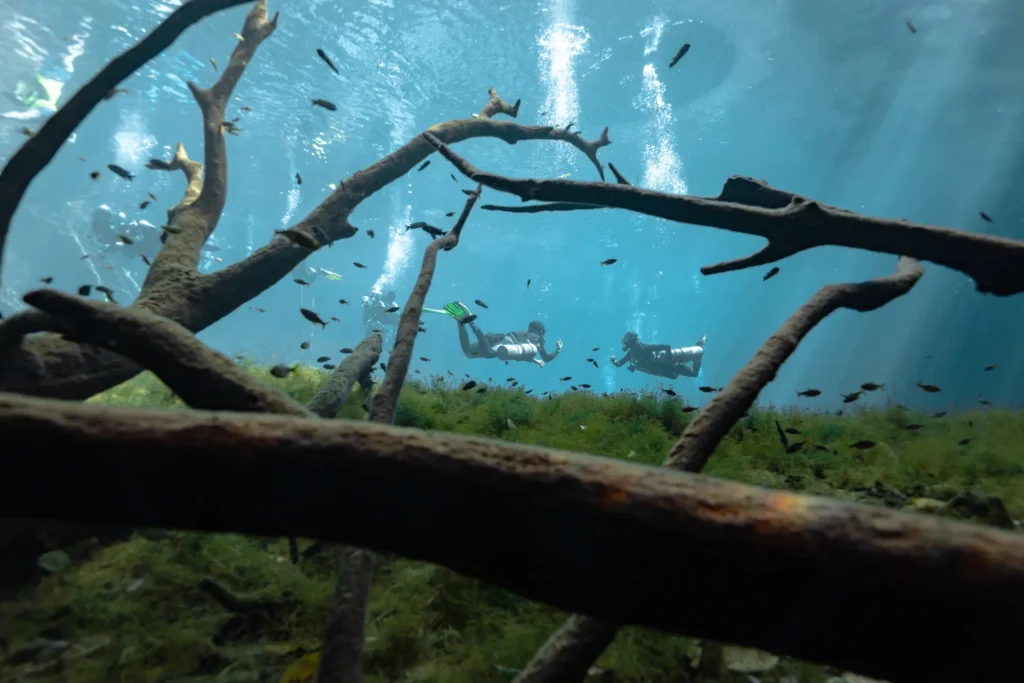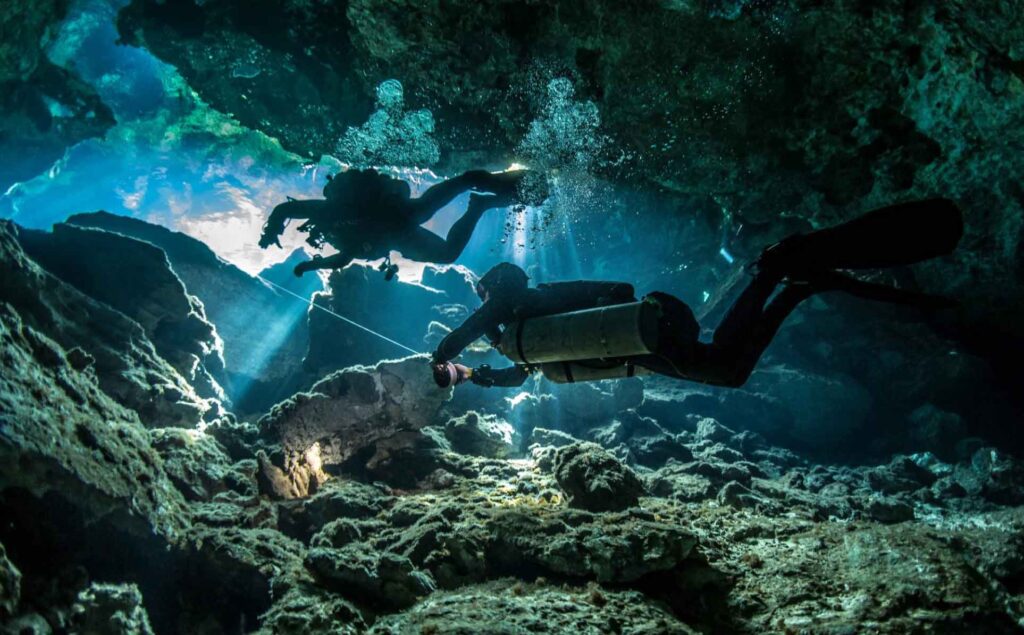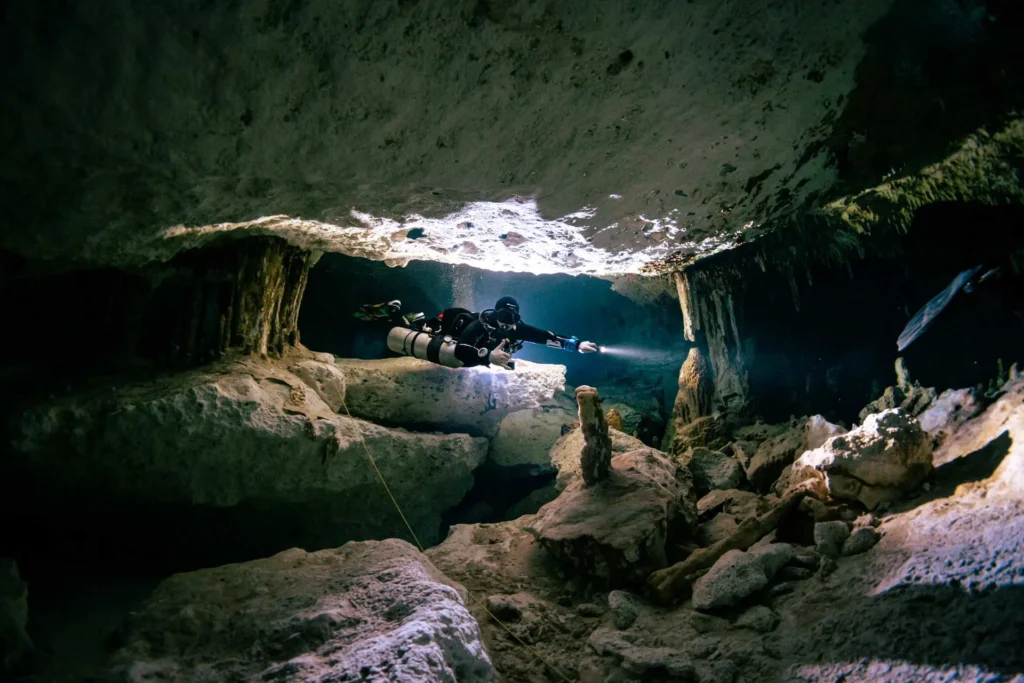Many people wonder what kind of dives a non-certified person, an Open Water diver, an Advanced diver, or even a Divemaster can do. Here we answer those questions for your next cenote dive in Quintana Roo and Playa del Carmen.
First of all, we need to distinguish the different types of dives a cenote can offer. This will help you decide what you want to do and what certification level you need.
For diving purposes, we divide a cenote into three geographic zones: Open Area, Cavern, and Cave.
Open Area: this is the part of the cenote where anyone can stay on the surface and look straight up at the sky, because there is no rock overhead. Here is the open area.

Cavern: in diving terms, this is the submerged zone where you still have direct access to natural light or can visually locate the cenote’s exit; it doesn’t require any skills beyond those of a certified recreational diver.

Cave: this zone receives no natural light or lies more than 45 meters/150 feet from the entrance, and it requires specialized training and certification beyond recreational diving. Note that at night every cenote is considered a cave.

With those zones explained, let’s dive into which scuba certifications match each type of cenote diving.
No scuba certification: You can take a Scuba Discovery experience and dive only in the Open Area of the cenote, following the international diving standards that guide us at all times.
With an Open Water certification and no specialties: you may dive in Cavern zones that do not exceed 18 meters/60 feet in depth and where a torch is optional (we always provide one, though).
With Deep, Night or Advanced Diver certifications: you can also dive Cavern zones but with more advanced options—such as the halocline at 28 meters/92 feet in Cenote Angelita, or reaching the depth of the “cylinder” in Cenote Dreamgate.
Now that you know which certification you need to enjoy cenote diving, we hope to see you soon and share some underwater time together!
Cenote Dive Tour Team


0 Comments